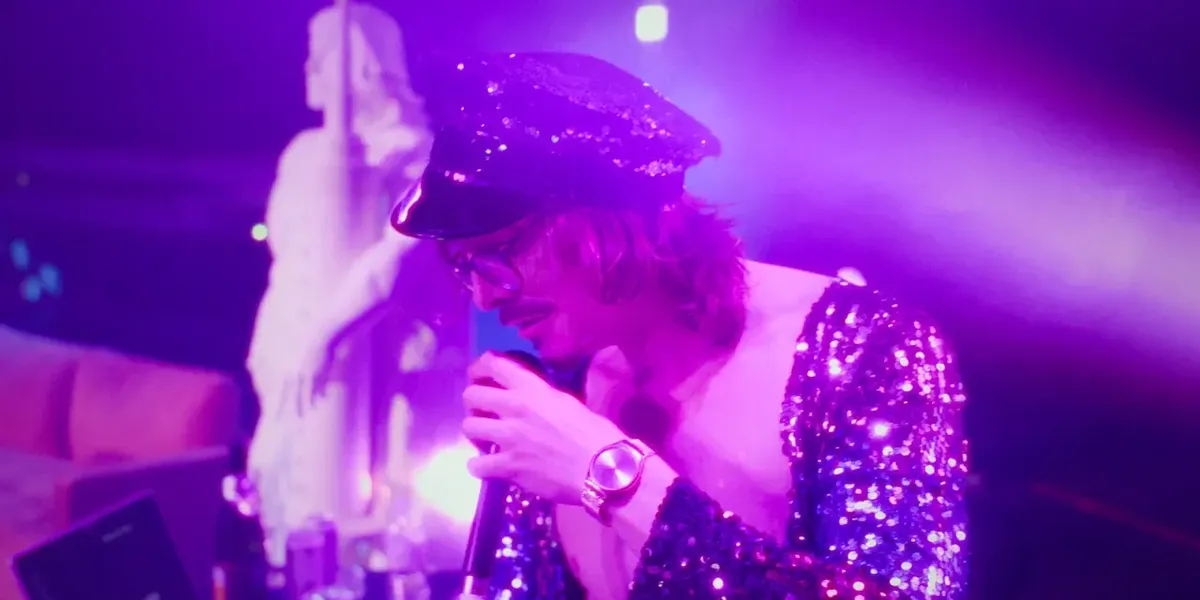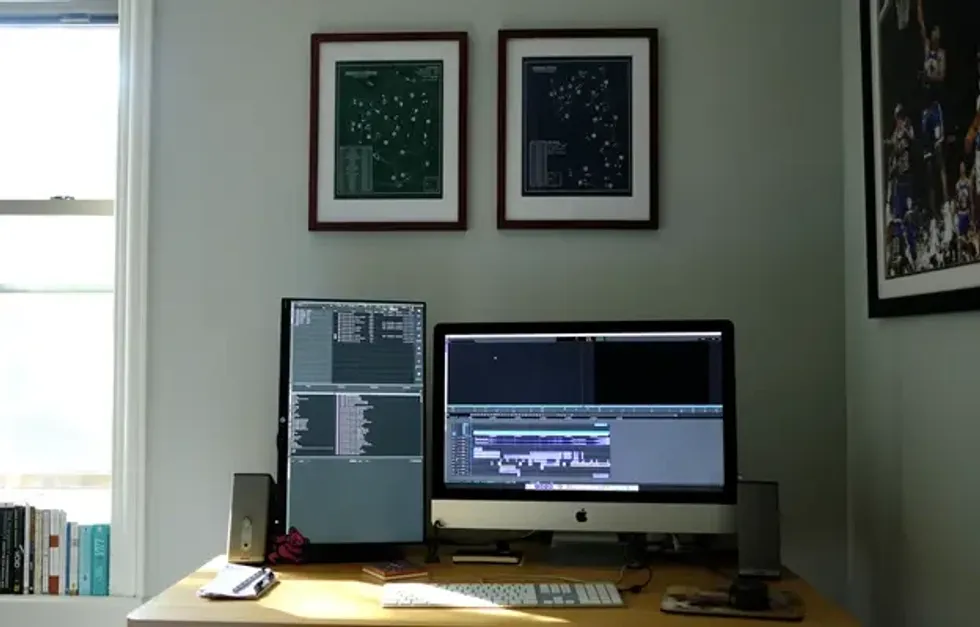
This post was written by Kylee Pena and originally appeared on Adobe blog on Jun. 20, 2023.
Marc rose to fame through YouTube and Twitch where he cultivated a passionate community—amassing millions of followers. This documentary retraces the artist’s steps from his humble Texas upbringing to performing at some of the nation’s biggest festivals.
While director, James Gallagher, joined Marc on the road to film and review footage using Frame.io, editor, Chris Amos, worked remotely in Chicago editing on Premiere Pro. We spoke with Chris to hear more about his workflow and editing inspiration.
Songs About ******* premiered at Tribeca on June 10.
How and where did you first learn to edit?
It all began in the beginning of high school with some sort of fusion of different editing platforms, including Premiere Pro, and then an IEEE 1394 port that I bought from Best Buy and installed on my dad’s computer without telling him. I’ve since moved to an iMac.
How do you begin a project/set up your workspace?
In a general sense I organize all of my footage in sequences rather than folders with a bunch of clips and sub clips. I like treating everything as it was shot, conceptually, instead of when the camera operator hits stop and start. If it’s a documentary, watching a day’s worth of footage from start to finish is great. Or, if there’s more intention behind the shooting, having sequences arranged thematically by those concepts is ideal. Ultimately, for a documentary like this, watching the footage as it naturally exists is the goal. I want to create my own opinions about how to use it.
Tell us about a favorite scene or moment from this project and why it stands out to you.
One of my favorite parts of the film is the first time we break away from the verité or timeline of events and go back to the YouTube footage of Marc realizing he’s hit one million followers. It’s an important moment for the language of the film — and for the general storytelling — to establish that we’ll be jumping between mediums and that we’ll be starting at the peak of Marc’s fame, both in real time, and within archival footage.
What were some specific post-production challenges you faced that were unique to your project? How did you go about solving them?
The biggest post-production challenge on this project was small and easily amenable. I am located in Chicago, and James is in NYC, so we decided to work entirely remotely. Ultimately, we went old school and duped a copy of his drive, and he shipped it to me. Then, I would post scenes or edits to Frame.io or send Premiere Pro project files (with single sequences in them) for him to review. Those project files would easily re-link to the footage he had on his end.
What Adobe tools did you use on this project and why did you originally choose them? Why were they the best choice for this project?
We used Premiere Pro and Frame.io, which was quite seamless. We would use Frame.io to send new media that we’d add to the overall project and to post edits and scenes for review. We used it as a file sharing service, which made it very easy to review scenes.
If you could share one tip about Premiere Pro, what would it be?
I think my only tip is to not overcomplicate your workflow. It’s cool that the software allows for so much flexibility within the filetypes you’re working with, but transcoding your footage to lo-res 1080p ProRes proxies, and making all of your additional media consistent (i.e. keeping all graphics as simple .pngs rather than large, layered .psds), will only speed up the editing process by not letting technical difficulties get in the way of the creative and thought-provoking process. There’s a reason the traditional, old-school workflow was established to begin with!
Who is your creative inspiration and why?
My biggest creative inspiration is to go with my gut and try things I’ve never thought of doing before. Premiere Pro and NLE platforms in general make that possible. It’s so easy & quick to place different moments and scenes next to each other to see how they work and play off of each other. Premiere Pro makes those possibilities endless.
That being said, I think my biggest creative inspiration is the Grateful Dead. They tried something new every night they played a show.
What’s the toughest thing you’ve had to face in your career and how did you overcome it? What advice do you have for aspiring filmmakers or content creators?
The toughest thing I’ve had to face in my career is simply ‘making it’. That required a good 6-7 years of being an assistant editor and working from 9 A.M. until who knows when every day for that period, all the while balancing freelance side projects that would pay next to nothing for me to establish myself as an editor. I just had to keep my head down and grind because there’s no prototypical career path to follow if you want to be an editor. And I’m grateful for that because ultimately, it’s a position of artistry. The only advice I can give is to avoid self-importance, say yes to everything (to figure what niche within editing you want to do), and be a collaborator. You’re not better than anyone, and the more projects you work on, the more perspective it gives you.

Share a photo of where you work. What’s your favorite thing about your workspace and why?
I think the best part of my workspace is that it can be predominantly lit by daylight. Something about that 5600K that hits differently than 3200K…
This post was written by Kylee Pena and originally appeared on Adobe blog on Jun. 20, 2023.
Monica has a BA in Journalism and English from the University of Massachusetts and an MS in Journalism and Communications from Quinnipiac University. Monica has worked as a journalist for over 20 years covering all things entertainment. She has covered everything from San Diego Comic-Con, The SAG Awards, Academy Awards, and more. Monica has been published in Variety, Swagger Magazine, Emmy Magazine, CNN, AP, Hidden Remote, and more. For the past 10 years, she has added PR and marketing to her list of talents as the president of Prime Entertainment Publicity, LLC. Monica is ready for anything and is proudly obsessed with pop culture.













